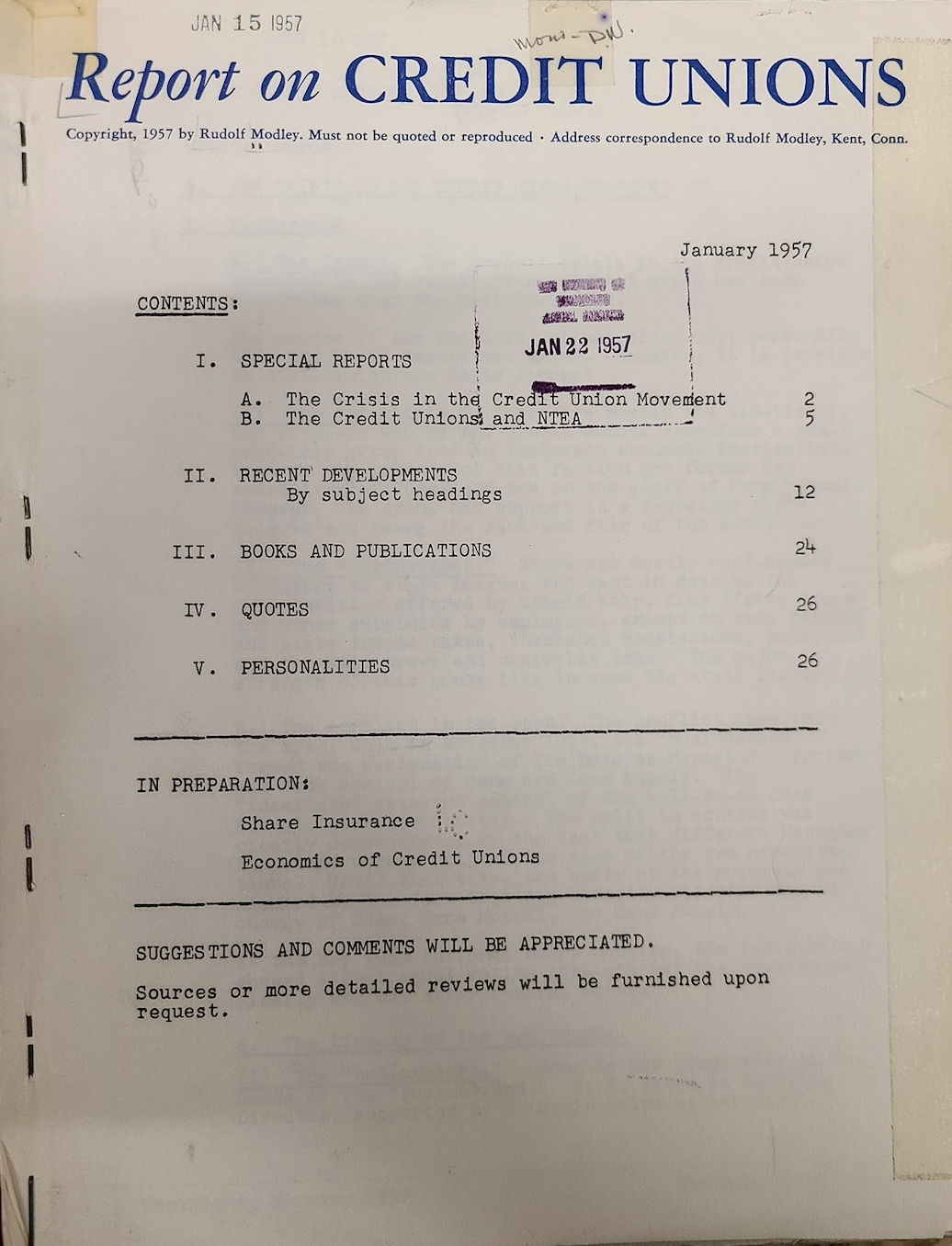America is not living in a normal period of federal governmental conduct. Trump’s largest campaign donor ($275 million) Elon Musk was given a non-legislative, non-elected temporary position. Thus informally empowered, his DOGE teams have gone into every federal government and some non-governmental organizations to mandate staff and program cuts.
These cuts and program closures are of Congressionally authorized programs and spending. This is a pure power play with no oversight, accountability or any formal authority.
It is total power without limits. In a democracy those who are appointed or elected to positions of power are called leaders. In an authoritarian government, these individuals are called rulers.
A Fight for the Cooperative System’s Integrity
On April 16 President Trump removed the two Senate confirmed democratic members of the NCUA board. Only Chairman Hauptman, a republican whose term ends this August, remains. There was no reason given in the firing email. Sue me if you don’t like it. And both fired members have filed suit in federal court.
The power of both law and precedent suggest this action is illegal. It raises substantive questions about NCUA’s authority and future. The bottom line is credit unions are in a fight for the financial and legal integrity of their system.
Some credit unions will want to wait and see what happens before acting. Others will delegate the burden and pay someone else to chart the way forward. Many will just go on with business as usual. With all the uncertainties in DC the assumption is that NCUA is at best pre-occupied, or at worst NCUA won’t dare buck Trump’s deregulation stance and stand up to credit unions.
One long-time reader suggested another approach: There is no reason to stand by this board, or jeopardize your voice by association. They were neither effective as administrators nor wise enough to see the fog of the last administration. . .
Why not push for the quick organization of a new board and the forward progress it might bring. In the very least be ready to work with this administration and keep the CU agenda clear of the fall out that will follow.
That presumes a democratic, participatory system. That is not what we have as illustrataed by yesterday’s announcement of the larest credit union liquidation in at least six years.
The Unilever FCU Liquidation
Here are the facts last published by NCUA about this sudden $47 million credit union liquidation announced by NCUA on April 30.
At December 30, 2024, Unilever’s total assets were $ 46.7 million; net worth, $4.1 million (8.95%), virtually no delinquency on a portfolio of which 90% is real estate loans. There are five employees, a single office, and very high average share balances ($29,400) and loans ($58,502), while serving just 1,448 members.
No conservatorship was announced. Instead an immediate takeover with no announced effort to find a merger solution. No facts or explanation for the los was provided except to say the credit union was insolvent. What caused this sudden loss discovery? Why the instant liquidation?
The absence of any facts or reasons for acting suggests another regulatory-supervisory failure that is just being expensed away with insurance funds.
It reminds one of the situation last July when NCUA suddenly discovered that Creighton FCU had lost 20% of its value in the days right after filing its March 2024 call report. The newly discovered loss was approximately $13 million in a $67 million FCU. The credit union was merged with Cobalt FCU. There was no NCUSIF expense. And no explanation of where the money went.
In the Unilever case, Hauptman, a one-person NCUA board, approved the outcome. There is no evidence in support of this action. Zero transparency for the members and the public. This is what one person rule creates. Is Unilever just the first of a series of unilateral decisions by Hauptman?
NCUA’s Defense of a One Person Board
On April 18, 2025 two days after the two board firings, the agency published an internal staff memo on the current state of the NCUA Board. The memo was unattributed and contained no statements by any NCUA person. It was just an anonymous assertion with these points:
Please be assured that the NCUA has precedent and standing delegations of authority in place to continue performing all operational and statutory requirements under the authority of a single Board Member. No statutory authority, internal legal opinion or other objective fact was provided to support this “assurance.”
In support of this undocumented position, the agency referenced a purported past event:
“During the Bush Administration (2001–2002), Chairman Dennis Dollar acted as a sole Board Member. He held a Board meeting, voted, and took several actions, both administrative and operational. Chairman Dollar recently stated in an article in CU Today, “The records are in place at NCUA from 2002 that clearly establish the precedent that the Chairman can act as the Board.”
This statement is the most problematic of all. Immediately after the board firings, Dennis Dollar called them “unprecedented.” But a day later he claims that his prior tenure is now the precedent to follow this unprecedented event (see same article).
However NCUA presents none of the “records” that Dollar says are in place and certainly references no legal opinion.
What is even more curious is that the official NCUA 2002 Annual Report page 13 states:
Board members confirmed
The highlight of NCUA’s legislative year occurred March 22, 2002, when the U.S. Senate confirmed JoAnn Johnson and Deborah Matz, both serving as interim appointees, to join Chairman Dennis Dollar to complete the three-member NCUA Board.
According to NCUA’s public account, Dollar’s two colleagues were indeed present, serving as interim appointees. There is no mention of his taking any action to set a precedent for one person rule to be followed in the future.
Following NCUA’s circular reasoning in citing a former board member and then that person confirming it is OK to do so, NCUA closes its staff update saying:
“It is the NCUA’s long-held view that a single Board Member constitutes a quorum when there are no other Board Members. Chairman Hauptman and NCUA’s leadership are equipped with the required authorities to continue implementing the Administration’s priorities. . .
The memo asserts an anonymous long-held view with zero factual, no legal reference nor any public prior event where this opinion was expressed. The long held view is an argument made of whole cloth.
One could just have easily asserted that in any organization’s bylaws or chartering authority where a quorum is required, the term presumes more than a single board member is necessary to conduct business. That is a more reasonable understanding of the quorum requirement.
So instead of clarifying Hauptman’s authority as Chairman, Vice Chairman and board member, the three-in-one board situation now, the agency presents a shallow, undocumented explanation to the staff and the public.
What’s at Stake this May Day
The rule of law is at stake. NCUA has become a basterdized agency with no apparent legal grounding. Fire the board and turn the agency into one person rule,
This is the reason for the Unilever FCU unexplained liquidation is so important. For the most consequential action the regulator can take versus a credit union is to put it out of business with no due process or public accountability.
The action was intended to demonstrate we’re really in charge now. It is the largest liquidation in six years or longer. A first example of how the agency now “will ensure America’s credit unions are safe and sound.” And if this arbitrary assertion of power can happen to Unilever FCU, it can happen to any credit union.
Credit unions today are confronting a situation where the entity charged with overseeing the legislation and regulation protecting the system, is itself acting extra-legal, unable or unwilling to even defend its current board status. In other words the agency which enforces the law cannot defend its own legal standing.
Where are the agency’s lawyers so quick to explain the agency’s legislative interpretations? Did they challenge the firings? Brief Hauptman? Were there resignations on principle if there was an obection?
Every NCUA employee took an oath to support the constitution, not a specific person in power. Where are those individuals of courage and character in the agency? Silence is consent. Consent is capitulation. That is the end of the credit union democratic experiment, unless there is a MayDay uprising starting now.

